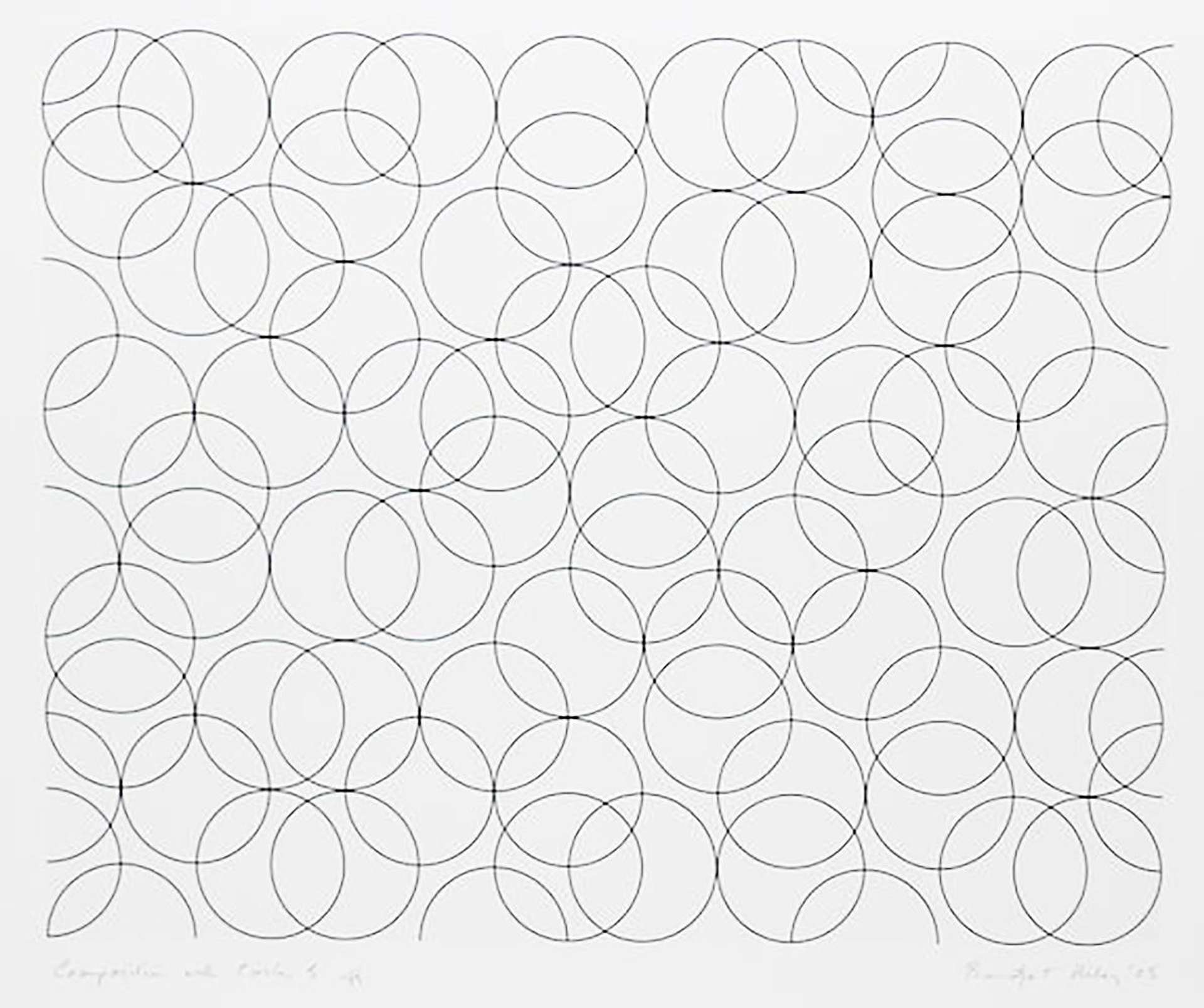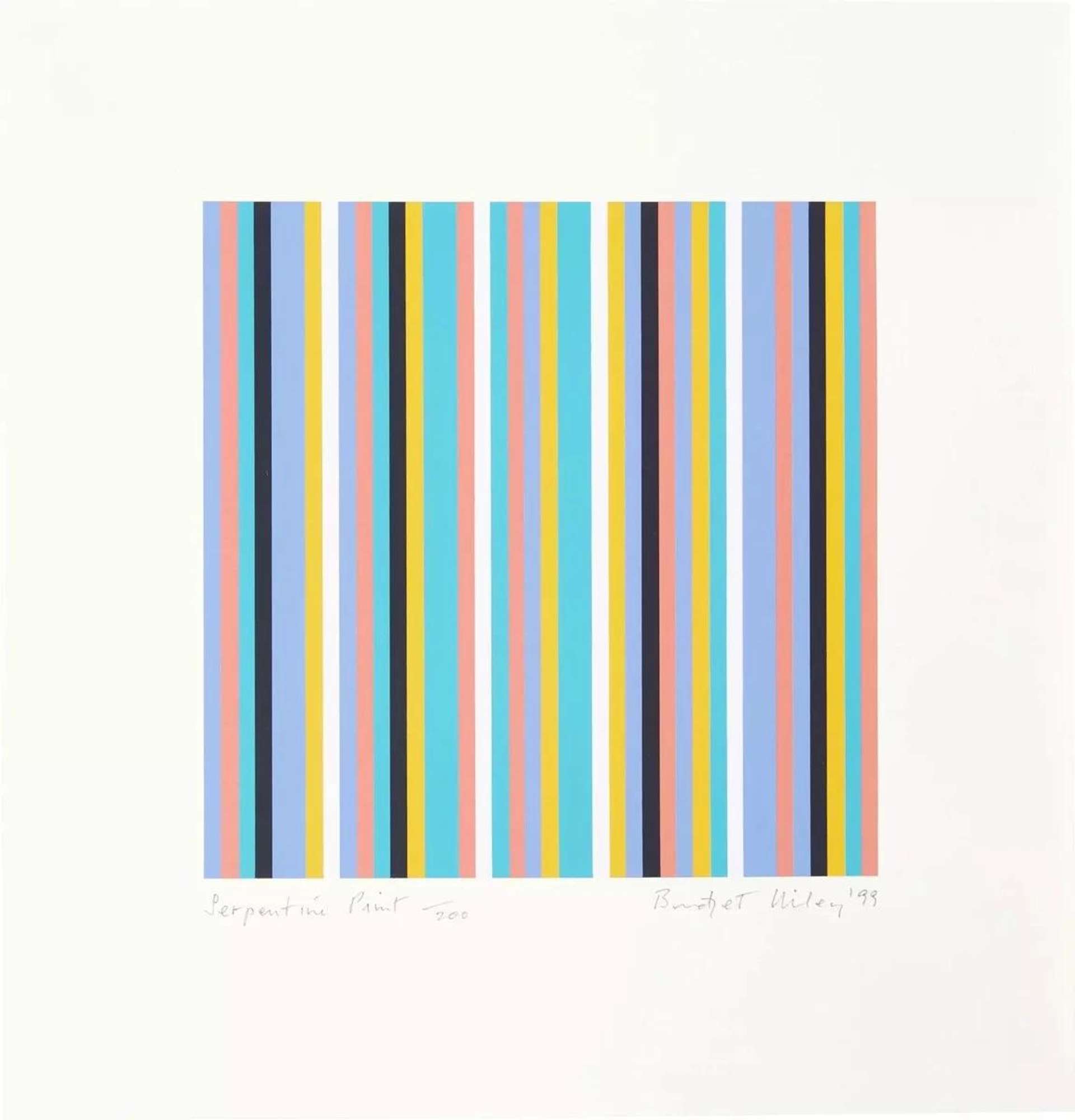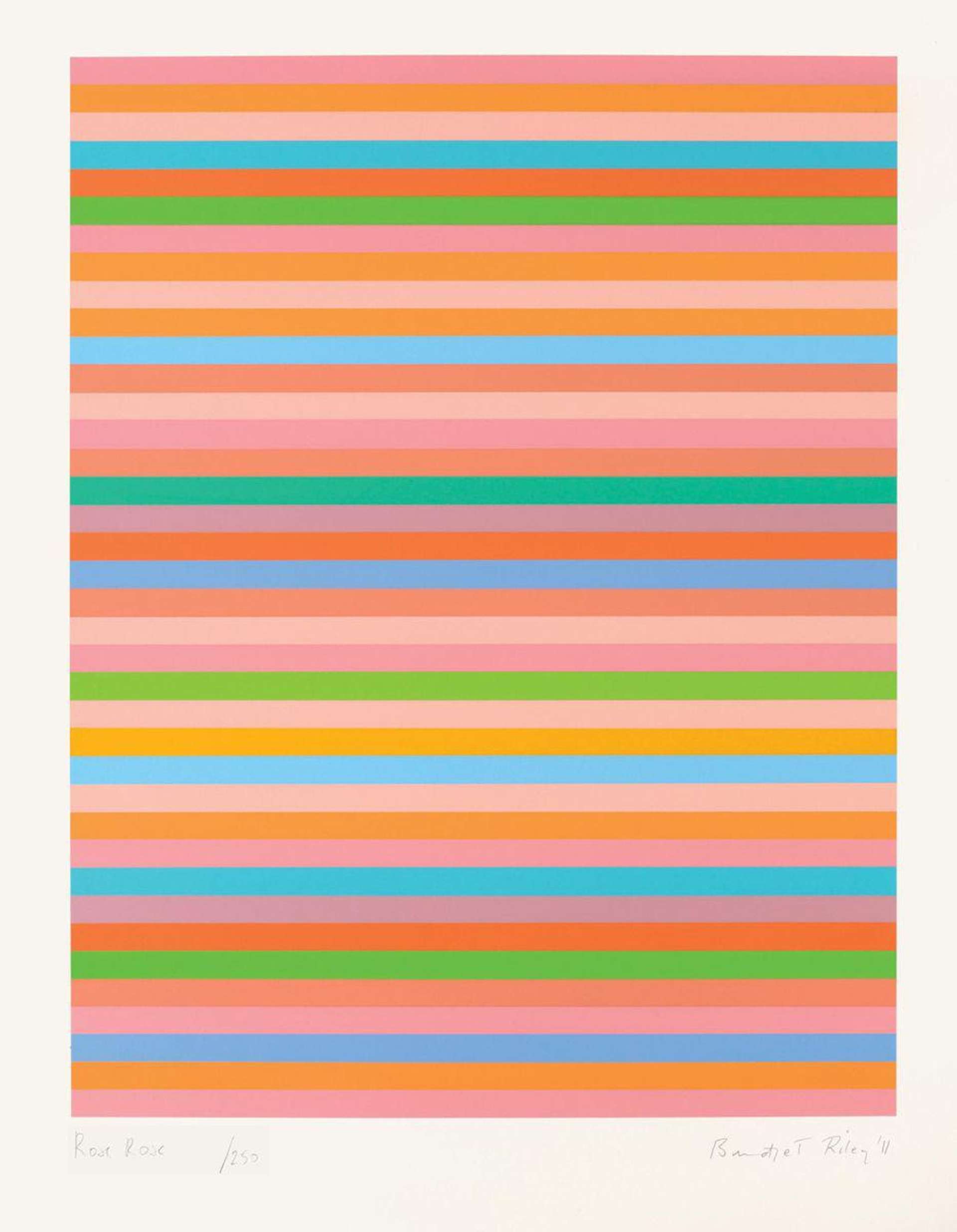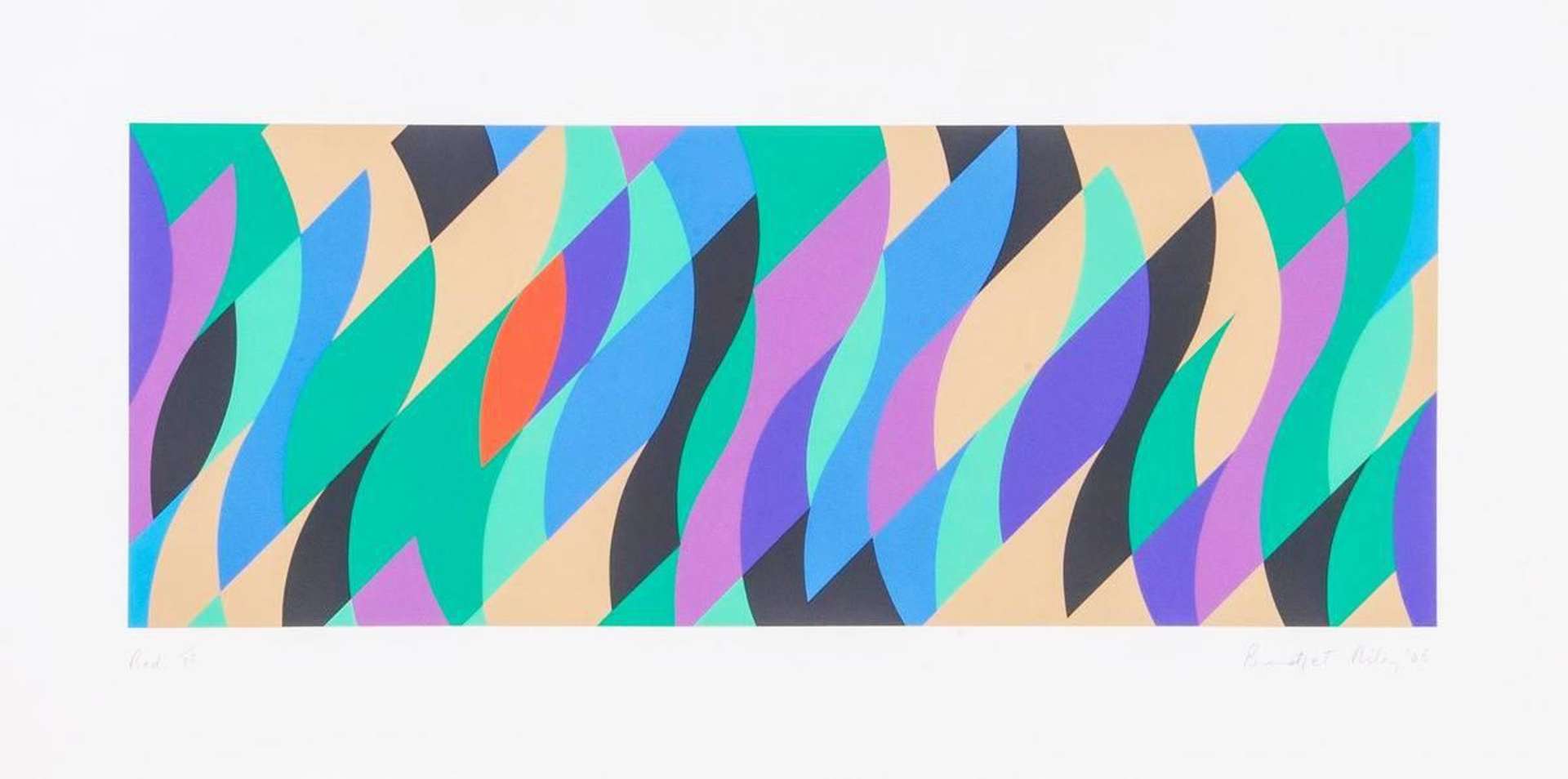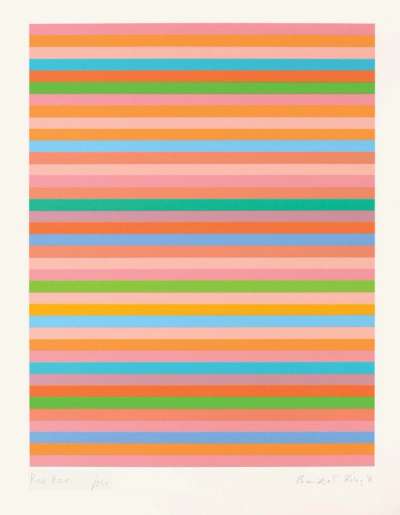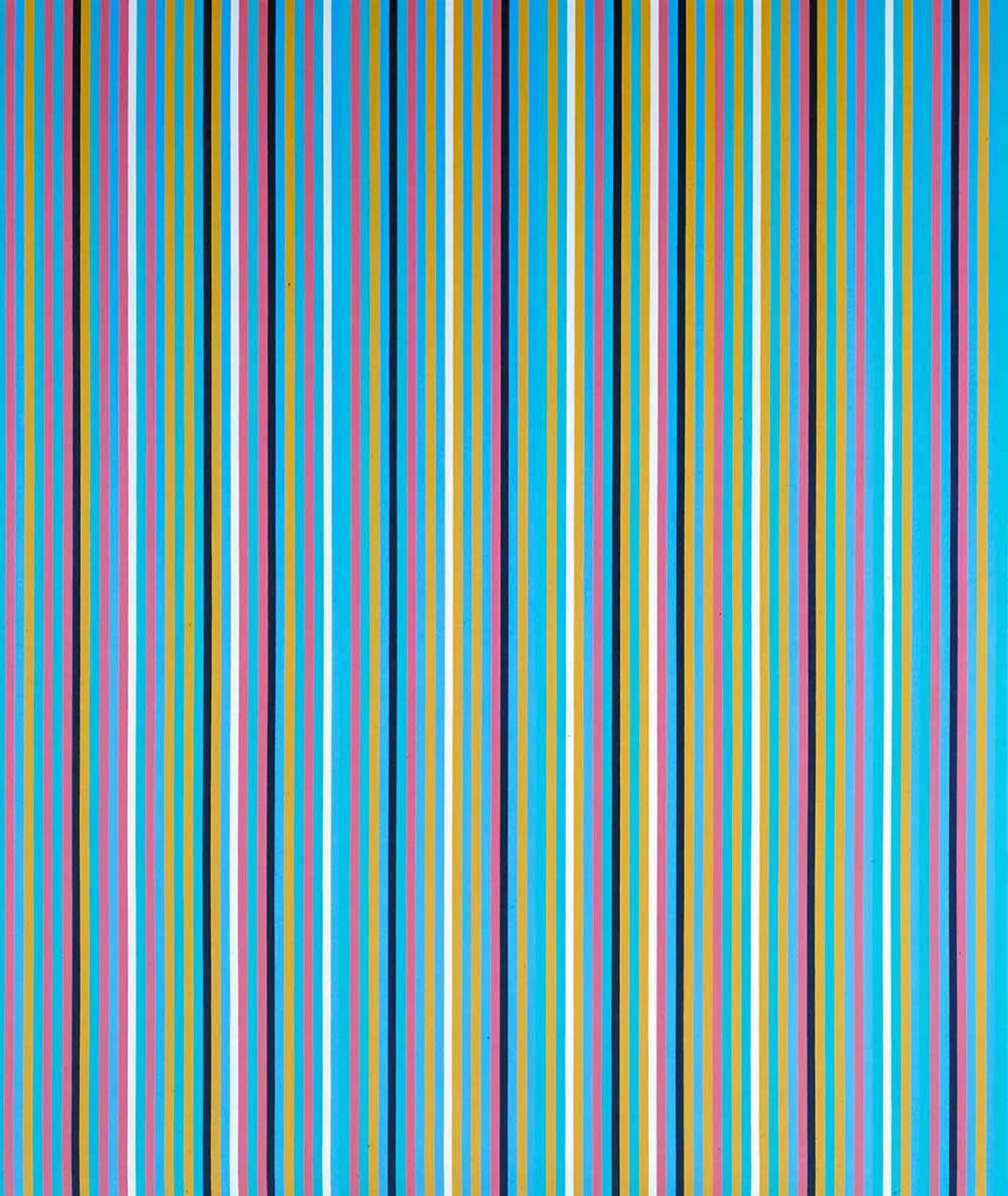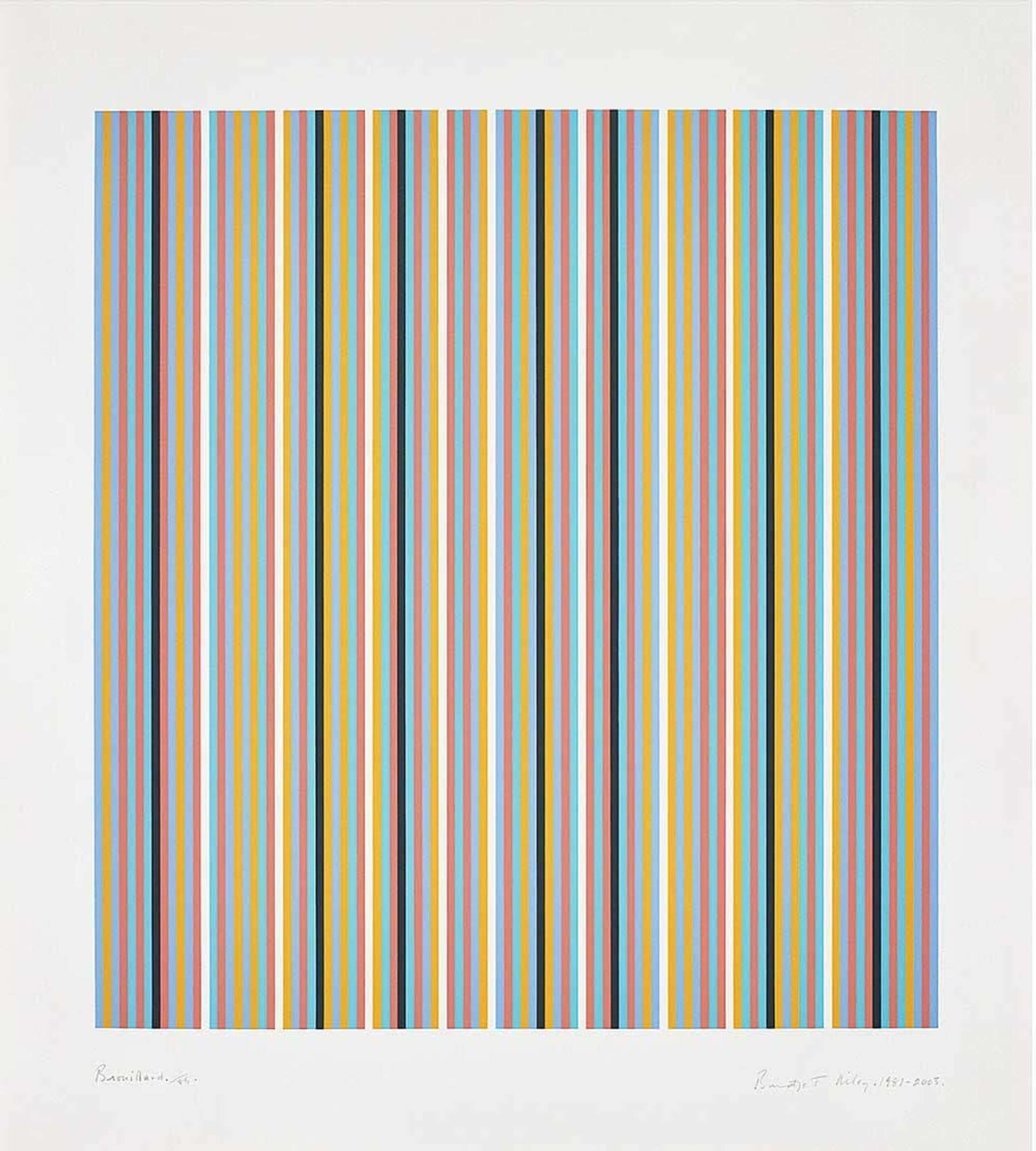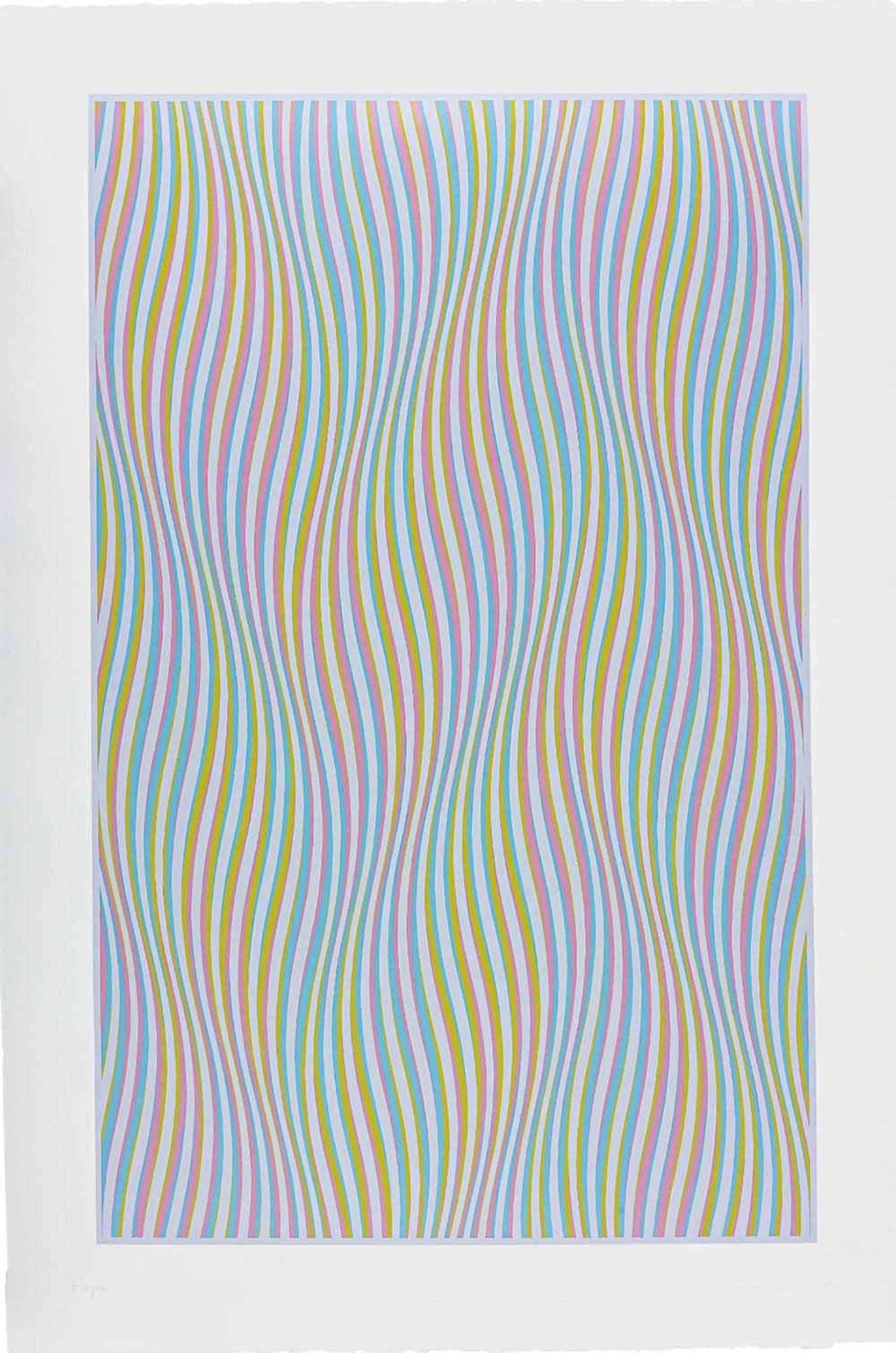 Fragment 5 © Bridget Riley 1965
Fragment 5 © Bridget Riley 1965Bridget Riley is a British painter, an innovator in abstract art as one of the leaders of the Op Art movement, and one of the most renowned artists of the 20th century. Her works explore themes of perception, motion, and rhythm, and have earned her numerous awards and accolades. In the 1960s, her focus on simplicity and abstraction was highly influential for the Minimalist movement, while her bold use of colour and graphic shapes influenced Pop Art. She remains influential, having had a record-breaking market year in 2022.
Riley's impact on modern art is undeniable, making her crucial for the discussion on the evolution of abstraction. In many ways, Riley paved the way for future artists exploring boundaries between perception and reality, as her unique approach to geometric shapes and colour theory continues to influence contemporary art today.
Bridget Riley's Artistic Techniques and Interpretation
Riley, an English painter born in 1931, stands as a pioneering figure in the realm of optical art, also known as Op Art. Her work is anchored in the belief that perception is an active process—a dynamic relationship between the viewer and the artwork. To achieve this, Riley employs a range of artistic techniques that manipulate geometric shapes, contrast, and colour. The building blocks of her compositions are often simple geometric forms like rectangles, lozenges, and wavy lines. These are strategically arranged to create a sense of motion, a kinetic quality that actually doesn't exist in the static piece of art. This illusory movement is amplified by her judicious use of contrast, often positioning starkly different elements in the foreground and background, causing them to interact in complex ways.
While Riley's early works were monochromatic, her foray into colour after 1967 added a new layer of depth and complexity. This was not merely an aesthetic choice; it was grounded in an intuitive understanding of colour theory. By deploying contrasting and complementary colours, she intensified her optical illusions, making them even more dynamic and engaging. Moreover, the repetitive and rhythmic arrangement of shapes in her art generates a sense of harmony that’s almost musical, making each piece a sort of visual symphony. Often produced on a large scale, the size of her pieces command the viewer’s entire field of vision and strengthen the illusion of movement and depth.
Her art doesn't just engage the eye, but also calls for intellectual participation, prompting viewers to question their own process of seeing. Despite the mathematical rigour of her art, Riley’s pieces are rich in emotional undertones. They can evoke a spectrum of feelings, from disorientation to exhilaration to serenity, making the viewing experience deeply personal and emotionally resonant.
Some of her most famous works include her Fragment series, Serpentine and her Lozenges series.
The Birth of Op Art: Bridget Riley’s Role in Shaping the 1960s Artistic Landscape
The 1960s was a decade of profound change in many spheres, including the world of art, in which Riley emerged as a seminal figure. As a forerunner in the development of Op Art, she challenged established norms about how art should be perceived and what it should aim to achieve. Alongside contemporaries like Victor Vasarely and Jesús Rafael Soto, Riley utilised geometric patterns and optical illusions to create pieces that seemed to move, vibrate or possess depth despite being confined to a two-dimensional plane. These artists collectively broke away from the traditional forms and styles that dominated earlier periods, embracing instead a bold new approach that explored the realms of perception, cognition, and human interaction with visual stimuli. The illusion of movement in their works redefined what a painting could be – a dynamic entity that actively engages the viewer's sensory faculties.
Riley's groundbreaking work also garnered significant recognition. In 1968, she became the first woman to win the painting prize at the prestigious Venice Biennale. This accolade further catapulted her to international fame, and provided an enormous boost to the Op Art movement as a whole. She not only shattered a gender barrier, but also legitimised and elevated a form of art that was often considered avant-garde and even controversial.
Riley's contributions to the 1960s art scene went beyond her own prolific output. The techniques and ideas she introduced added new dimensions to artistic creativity and critical engagement, offering a fresh set of tools and paradigms that artists continue to explore. Artists like Richard Anuszkiewicz and Howard Hodgkin found inspiration in her exploration of form, colour, and perception. Her work paved the way for a broader reconsideration of how space, geometry, and perspective could be manipulated to create emotive, thought-provoking works of art.
Bridget Riley's Influence on Pop Art and Minimalism
Bridget Riley's artwork had a profound influence on the Pop Art and Minimalism movements. Her focus on using simple forms and repetition influenced Minimalism and artists such as Frank Stella and Agnes Martin. Her exploration of colour and shape also inspired Pop artists to experiment with these elements in their own work. Her art’s mass appeal also resonated with the Pop Art movement, as her influence even crossed over into the fashion world. Iconic designer Mary Quant sought inspiration from Riley’s work to create her famed “London look”, and Rudi Gernreich was also successful using monochrome and geometrical patterns. Although Riley was not pleased to see her works commercialised in this way and tried to sue for copyright infringement, it is illustrative of just how large her impact was in pop culture at the time.
Riley’s artwork has proven to be timeless yet current, inspiring new generations of artists to push the boundaries of their own creativity, as Riley continues to create well into her 80s and 90s.
Bridget Riley's Lasting Impact on Contemporary Art
Riley’s role in the birth of Op Art marks her as a revolutionary figure whose impact transcends her own canvases to resonate throughout the entire art world, both then and now. Her legacy can be seen in contemporary art with numerous artists seeking inspiration from her to explore the use of colour and pattern in their work, and continuing to play with the viewer’s perceptions. Many contemporary works employ similar techniques, like Shepard Fairey's street art, Angella Bulloch’s neons or Patrick Hughes' 3D paintings. Bridget’s work continues to inspire people to push artistic boundaries beyond what was traditionally thought possible.
Her accomplishments have garnered her countless accolades, including a royal honour from Queen Elizabeth II. Her work has consistently been the subject of major exhibitions throughout her career, from the 1960s to the 2020s, evidencing how pertinent her point of view has been.
Bridget Riley's Enduring Legacy
Apart from her undeniable accomplishments within the art world, Riley’s impact extends beyond it, influencing fields like graphic design and architecture by reshaping the way artists and viewers perceive and interact with art. Her work has also remained current and has experienced a boom in market appreciation, breaking several artist records in 2022. She has also consistently performed well in the prints market, with some of her works having experienced value growth of as much as 460% since 2017. We have compiled a guide on things to know before purchasing your first Riley print.
Riley's artistic techniques and innovative approach to abstract art have left an undeniable mark on the 1960s art scene and in the following decades. Her influence is evident in the development of Op Art, Pop Art, Minimalism, and even fashion. Her work has continued to inspire generations of artists and designers and remains a significant force in contemporary art. Riley's lasting legacy is a testament to her creativity and imagination, challenging the viewer to experience art in a non-traditional way.



